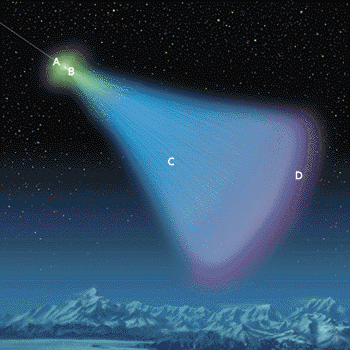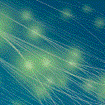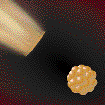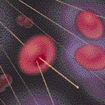The Life of a Cosmic Ray

A.  |
Cosmic rays--atomic nuclei traveling at nearly the speed of light--inhabit a bizarre relativistically foreshortened universe before smashing into nuclei of atoms of atmospheric gas high above the earth. A significant fraction of the incoming energy is converted to matter in the form of subatomic particles, including muons, which in turn collide violently with other atoms in the atmosphere to create an "air shower." Gamma rays are also emitted. |
B.  |
Particles in the initial stages of the cascade of collisions are traveling so fast that they exceed the speed of light in the tenuous upper atmosphere (which is negligibly less than the speed of light in a vacuum) and so emit Cerenkov radiation--an optical analogue of a sonic boom. |
C.  |
As the particles created in the initial collision strike atmospheric nuclei, their energy may create additional particles and high-energy radiation. Conservation of momentum dictates that most of the matter created travels in the same direction as the initial cosmic ray, but photons may be emitted essentially in all directions. |
D.  |
Muons and other cosmic-ray debris remaining toward the end of an air shower have dissipated enough energy that their interaction with the atmosphere gives rise mostly to ultraviolet light from the disruption of electron energy shells. This light can be detected by sensitive photomultipliers. In a particularly powerful event, some of the particles from the shower will reach the ground, where they can be detected as well. |
Credit: Michael Goodman